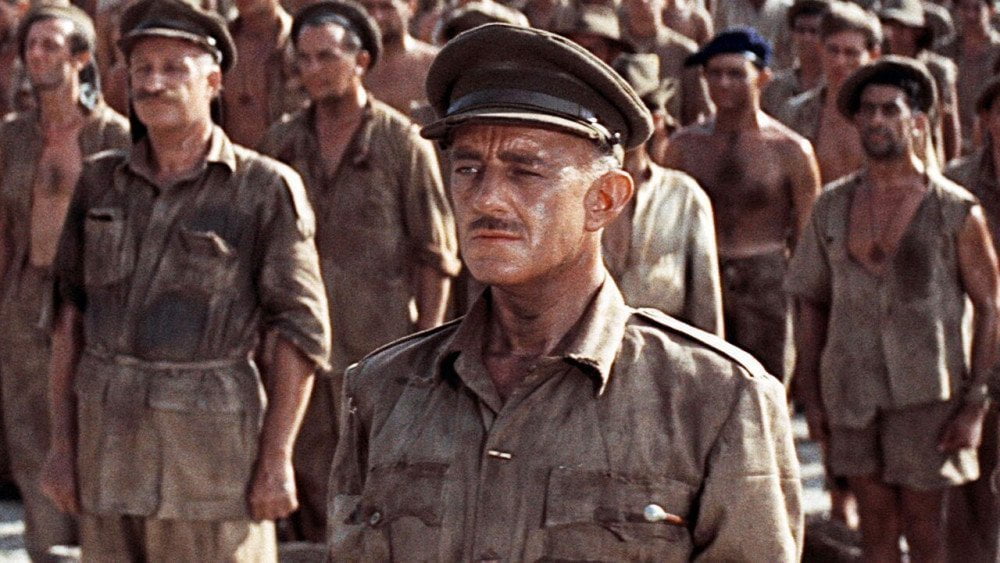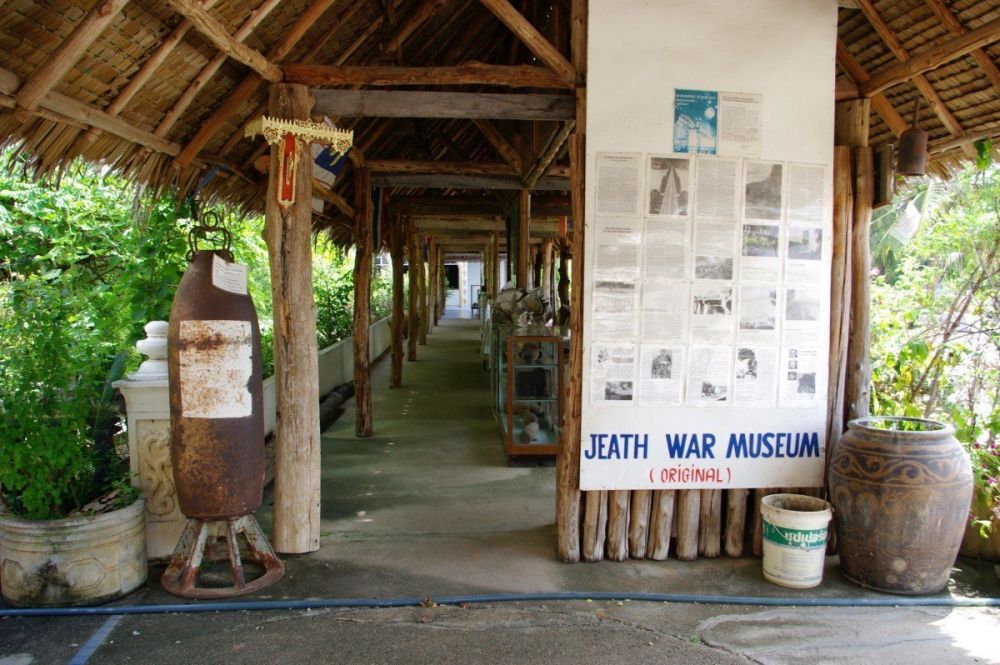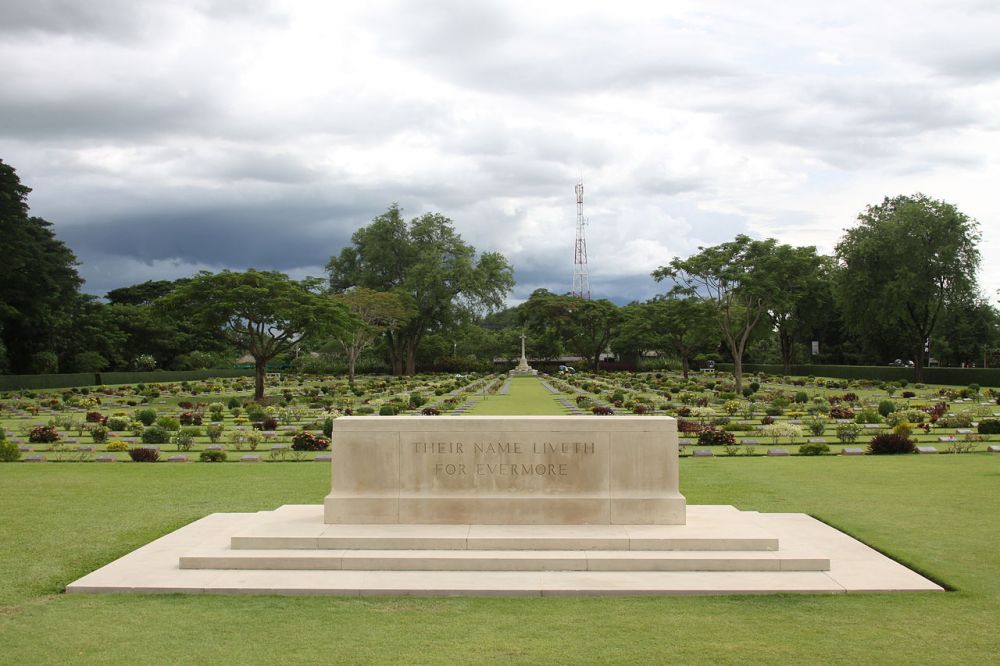The main reason to visit Kanchanaburi is the bridge over the River Kwai. It is in fact part of the ‘Death Railway’, built by prisoners of war during World War II. In addition to the bridge, famous for the film of the same name, the town offers several ‘attractions’ related to World War II, including the offensive JEATH War Museum.
Table of Contents
The Bridge on the River Kwai
The first point of interest in Kanchanaburi is definitely the River Kwae Bridge, originally Saphan Mae Nam Khwae Yai. The bridge was built between 1942 and 1945 by prisoners of war and forced labourers. During World War II, the bridge across the River Kwai was a key part of the railway line between Thailand and Burma to transport occupying Japanese troops.
PLAN YOUR TRIP TO THAILAND
Before your trip to Thailand, buy Airalo eSIM online to stay always connected at the best rates. You can install it before your trip, and you don’t have to hassle about purchasing a physical SIM at the airport.
In addition, remember to purchase Heymondo travel insurance that provides coverage against unexpected events such as medical emergencies, trip cancellations, lost luggage, and more. It offers great value for money and ensures a stress-free and enjoyable trip!
Today, the River Kwae Bridge is a tourist attraction, but its construction cost the lives of many people. The brutality of the Japanese soldiers, the meagre rations and the diseases brought by the tropical climate killed thousands. This section of the railway is called the Railway of Death because some 13,000 prisoners of war and 100,000 civilian workers deported from neighbouring countries died here. Part of the bridge over the River Kwai was later destroyed by Allied bombing and rebuilt in 1945 after the end of the war.
The name of the river over which the bridge crosses the River Kwai: spoiler, it is not Kwai
To be precise, the bridge would not even cross the River Kwai. The river it crosses is the Mae Khlong, but the name issue arose from a geographical misunderstanding. In fact, after World War II, Google Maps did not yet exist and the author of the book from which the film ‘The Bridge on the River Kwai’ was taken, had never been to Kanchanaburi!
Pierre Boulle had set his work on the River Kwai because he knew that the Death Railway ran parallel to the Kwae River for several kilometres. When the first Western tourists started arriving in the area after the release of David Lean’s film (shot in Sri Lanka!) ‘The Bridge on the River Kwai’ with Alec Guinness, the local authorities thought it best to rename that stretch of river ‘Kwae Yai’ to keep everyone happy.
The River Kwae Bridge tourist trap
The River Kwae Bridge today is a bit of a tourist trap: you can either take a local train between two nearby stops just to pass over it, hire a boat to see it from underneath, or walk directly over the rails into the designated areas when the trains arrive.
Depending on the time of your visit you may even find yourself in the middle of a crowd intent on taking selfies. Unfortunately, it is one of those places you ‘must’ see, even though you are aware that it is now a super tourist destination, a bit like the Colosseum in Rome with its fake Roman centurions.

The famous book and film The Bridge on the River Kwai
To acquaint yourself with the history before your visit, consider reading the book and watching the film that famously renamed the original stretch of the Mae Khlong/Kwae River. Upon their release, both the book and the film garnered global success, becoming iconic for our parents’ generation.
Finding a copy of the book ‘The Bridge on the River Kwai’ by Pierre Boulle today can be a bit of a challenge. It’s more likely to be available at used book stalls or on specialized websites for secondhand books. In fact it’s an older book with no recent reprints.
On the other hand, locating the DVD ‘The Bridge on the River Kwai’ ,directed by David Lean and sharing the same name, is comparatively easier, though not overly so. Furthermore, there’s a special remastered edition in commemoration of the film’s 60th anniversary.
Kanchanaburi’s World War II museums
Almost all the attractions in Kanchanaburi are related to World War II. The only museum I suggest you see is the Thailand-Burma Railway Centre. It is in fact the only one with historically correct explanations of the Death Railway. Sure, there are other museums around, but you have to be aware of their level of ignorance.
World War II Museum and Art Gallery
This World War II museum and art gallery sit right across from the JEATH War Museum. Honestly, the difference between the two isn’t crystal clear. It only hit me that they’re separate places when I was sorting out photos for this article, doing a little Google comparison.
Inside the World War II Museum and Art Gallery, get ready for a quirky collection of mislabeled stuff—statues, paintings of Thai kings, rusty guns, stamps, you name it. And if you step outside, assuming it’s really the outside of this museum and not the JEATH War Museum, you’ll find random railway carriages and vintage cars scattered about.
World War II Museum and Art Gallery
395, 415 River Kwai Rd, Tha Ma Kham
Mueang Kanchanaburi District
Kanchanaburi 71000, Thailand
JEATH War Museum
Together with the previous museum, the JEATH War Museum is for me the worst museum in the world. In addition to the ridiculous exhibition, the history told here is really surreal. Nazism and Fascism have been romanticised to the extreme with Mussolini killed by the Balilla (?). Wikivoyage itself called this museum “an insult to the suffering of the prisoners who died during the construction of the railway”.
The JEATH War Museum is the first museum opened in Kanchanaburi, founded in 1977 by the Buddhist temple Wat Chaichumpol. Given the result, the temple would probably have been better off selling souvenirs. The purpose of the museum was to educate tourists about the atrocities committed during the construction of the Death Railway and to commemorate the people of all nationalities who had lost their lives. The word JEATH stands for the wartime countries involved in the railway: Japan, England, Australia/America, Thailand and Holland/Netherlands.
JEATH = Japan, England, Australia/America, Thailand, Holland.
JEATH War Museum
Mueang Kanchanaburi, Kanchanaburi
The museum is divided into two sections. First, a collection of war relics. Second, a replica of the rooms in which the prisoners lived. In the first building, objects that should tell the story of the daily life of soldiers and prisoners have been collected mostly in the Kanchanaburi area. Unfortunately it looks like a warehouse. The second part, on the other hand, is located in two bamboo huts and displays mostly faded photographs. The most interesting attraction is the unexploded 500-pound bomb on display in the courtyard.
Apart from displaying weathered material, with many rusted or damaged exhibits, the overall appearance of the museum is shabby and amateurish. There are in fact ridiculous broken and discoloured statues along the museum route. They are supposed to depict prisoners in the river during the bombing, but you just laugh when you see them. In fact, the bombs drawn on the ceiling have the same style and level of detail as a primary school child’s drawing. To say that this museum is horrendous is probably paying it a compliment.

Thailand-Burma Railway Centre
The Thailand-Burma Railway Centre is generally considered the best source of information on the part of the World War II that involved Thailand. The museum chronicles the construction and route of the railway, with insights into the working conditions of prisoners of war and forced labourers.
Thailand-Burma Railway Centre
73 Chao Khun Nen Rd, Ban Nuea
Mueang Kanchanaburi District
Kanchanaburi 71000, Thailand
Kanchanaburi war cemeteries
Near Kanchanaburi, you can explore two poignant war cemeteries dedicated to Allied soldiers who lost their lives in Thailand. Simple gravestones adorn lush English-style meadows. Some of these soldiers were quite young. Certain gravestones bearing only names, while others feature heartfelt words from surviving family members.
Kanchanaburi War Cemetery
The main war cemetery in Kanchanaburi houses 6,982 prisoners of war from the United Kingdom, the Netherlands and Australia. The people resting here are all supposed to have died during the construction of the Death Railway that connected Thailand to Burma. At the end of World War II, the Allies transferred all the remains of war prisoners buried along the railway line to the two war cemeteries in Kanchanaburi.
Today, the Kanchanaburi War Cemetery is a classic English cemetery with grey gravestones laid out regularly on well mown lawns. Some gravestones have personal inscriptions, which makes it very moving to visit.
Kanchanaburi War Cemetery (DonRak)
284/66 Sangchuto Rd, Ban Tai
Mueang Kanchanaburi District
Kanchanaburi 71000, Thailand

Chong Kai Allied War Cemetery
A second war cemetery two kilometres from Kanchanaburi is the Chong Kai Allied War Cemetery. This one is smaller than the better known Kanchanaburi War Cemetery. You can reach it by motorbike.
Chong Kai Allied War Cemetery
Tha Ma Kham, Mueang Kanchanaburi District
Kanchanaburi 71000, Thailandia
Helpful informations for your visit to Kanchanaburi
The city of Kanchanaburi does not have much to offer. My impression was that of a city trying to gain as much as possible from inexplicable western tourism. Probably without the film ‘The Bridge on the River Kwai’ the number of tourists would have been somewhat limited. However, seeing this section of the Death Railway live is an almost obligatory stop for tourists.
Unfortunately, due to the abysmal ignorance of war museums and boorish tourism surrounding Kanchanaburi, it is really hard to remember the atrocities of war without taking idiot selfies. Seriously, at the JEATH War Museum and World War II Museum and Art Gallery you can see such ridiculous displays that the only way to get through the day is to laugh.
To visit all the sights, including the war cemeteries, I suggest you rent a scooter. The roads here are much less busy than in Bangkok. Then you shouldn’t risk your life, despite the unapproved helmets that only offer dummy protection. If you can afford to spend more, renting a car with a driver can be a good choice. Even if it offers less freedom to discover the countryside around.
How to get to Kanchanaburi
From Bangkok you can reach Kanchanaburi by bus or by hiring a car with a driver. The first solution is definitely the cheapest, with prices of around €/5£4.5 per person. If you are travelling in a group or with your family, hiring a chauffeur-driven car might be the best option.
Better still, join a one-day guided tour from Bangkok. In this case, you will have no stress to prepare your trip and will only be taken by your guide to the best attractions in Kanchanaburi.
Where to stay in Kanchanaburi
If you decide to spend a night in Kanchanaburi to allow time for visiting the war cemeteries, I suggest not relying on the taxi driver’s recommendations. In fact they might suggest places owned by acquaintances. Instead, consider booking a known establishment online and reading reviews. The hotel where I stayed seemed charming, but my room overlooked a karaoke bar, and I couldn’t get any sleep. Additionally, in Thailand, especially in guesthouses and budget hotels, you might come across “deals” that turn out to be windowless rooms.
I recommend not skimping too much on expenses but choosing a higher-category hotel that ensures comfortable rooms. I assure you that in Kanchanaburi, it’s worth spending a bit more to get a good night’s sleep.
Recommended accommodations, which I have personally seen though, unfortunately, haven’t stayed at, include the beautiful Natee The Riverfront Hotel Kanchanaburi, the more affordable Latima Boutique Hostel, or the U Inchantree Kanchanaburi, a charming resort surrounded by nature just outside the city.
All these establishments offer excellent service and have a private pool for guests to relax in after exploring Kanchanaburi. If you’ve rented a scooter or use a taxi, you won’t have any trouble reaching the accommodation you’ve chosen.
Write in the comments if you have already visited Kanchanaburi on a trip to Thailand and had the same impressions as me. Or if you only knew the city from the book and film ‘The Bridge on the River Kwai’.
